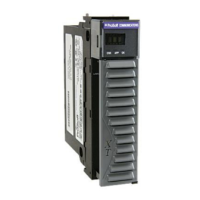MVI56E-MCM ♦ ControlLogix Platform Reference
Modbus Communication Module User Manual
ProSoft Technology, Inc. Page 155 of 209
6.5.3 Port 2 Setup
This parameter defines if this Modbus Port will be
used. If the parameter is set to 0, the port is
disabled. A value of 1 enables the port.
This parameter specifies if the port will emulate a
Modbus Master device (0), a Modbus Slave device
without pass-through (1), a Modbus Slave device
with unformatted pass-through (2), a Modbus Slave
device with formatted pass-through and data
swapping (3), or a Modbus Slave device with
formatted pass-through and no data swapping (4).
This flag specifies if the floating-point data access
functionality is to be implemented. If the float flag is
set to 1, Modbus functions 3, 6, and 16 will
interpret floating-point values for registers as
specified by the two following parameters.
This parameter defines the first register of floating-
point data. All requests with register values greater
than or equal to this value will be considered
floating-point data requests. This parameter is only
used if the Float Flag is enabled.
This parameter defines the start register for
floating-point data in the internal database. This
parameter is only used if the Float Flag is enabled.
This parameter specifies the Modbus protocol to be
used on the port. Valid protocols are: 0 = Modbus
RTU and 1 = Modbus ASCII.
This is the baud rate to be used on the port. Enter
the baud rate as a value. For example, to select
19K baud, enter 19200. Valid entries are 110, 150,
300, 600, 1200, 2400, 4800, 9600, 19200, 28800,
384 (for 38400 bps), 576 (for 57600 bps), and 115
(for 115,200 bps).
This is the parity code to be used for the port.
Values are None, Odd, Even.
This parameter sets the number of data bits for
each word used by the protocol. Valid entries for
this field are 5 through 8.
This parameter sets the number of stop bits for
each data value sent. Valid entries are 1 and 2.
This parameter sets the number of milliseconds to
delay after RTS is asserted before the data will be
transmitted. Valid values are in the range of 0 to
65535 milliseconds.
This parameter sets the number of milliseconds to
delay after the last byte of data is sent before the
RTS modem signal will be set low. Valid values are
in the range of 0 to 65535.

